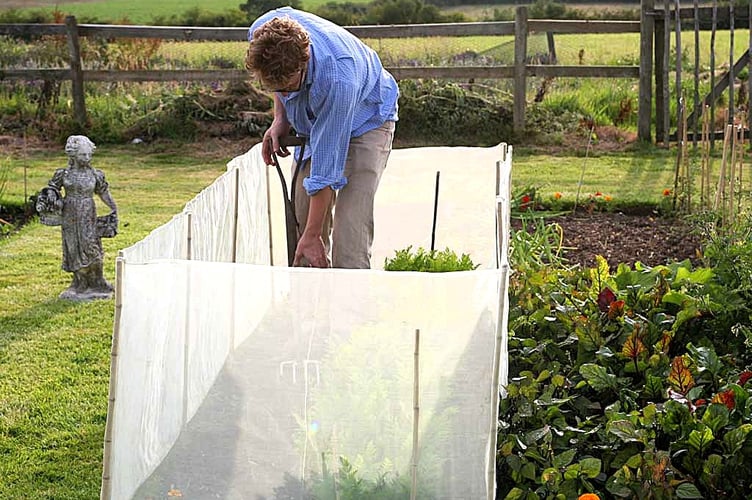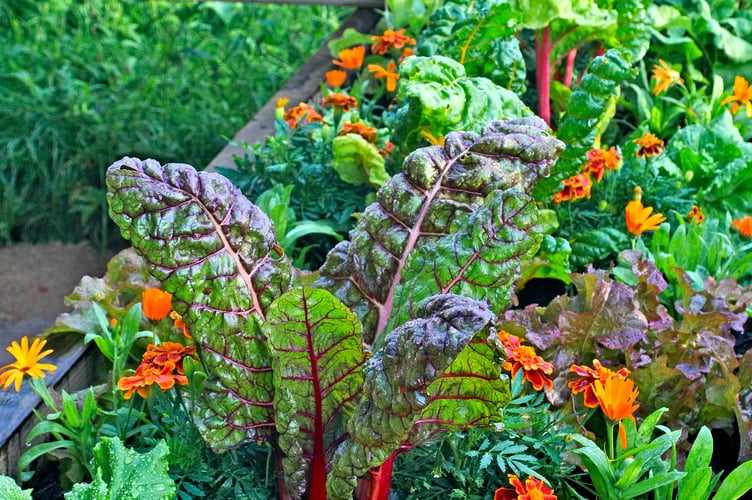THE good news is that March is the month our gardens begin to wake up refreshed from their winter sleep.
The bad news is that so do garden pests. But that doesn’t mean that we have to turn our gardens into a chemical battlefield to keep them free of bugs.
After all, countless generations of gardeners managed without chemicals and pesticides when helping plants fight back and today there is growing evidence that many pests can be controlled in natural ways.
Recent studies have apparently shown that plants grown in healthy soil are often able to withstand the majority of pest attacks so it’s vital to get your soil in tip-top condition with improved drainage and aeration and a good helping of natural manure or compost.
Now is the time to make plans to nip pest populations in the bud before it becomes a major problem later in the season. For instance many bugs and diseases can be managed and even prevented by a regular garden clean-up - a blast of the garden hose will dislodge aphids and mites and knock off leaf-eating beetles and other tiresome pests.

I’ve found that a bowl of soapy water will attract aphids and a shallow dish filled with beer and sunk into the ground will usually lure slugs to the last-chance saloon. Another traditional anti-pest remedy you might think is worth trying is putting wood-ash around plants, which is claimed to deter maggots, snails, aphids and beetles.
Carrots can be protected from the dreaded carrot-fly by erecting a temporary barrier around the crop and beneficial insects such as hoverflies can be attracted by growing plants with easily accessible pollen, like daisies.
Also have second thoughts about getting rid of nettles - they have been shown to give ladybirds a start-of-the-season supply of aphids and are well worth encouraging - apparently one ladybird can eat over 5,000 aphids a year!
Gardeners of yesteryear reckoned a vinegar spray was one of the most effective natural bug repellents, and it could be worth giving it a go. Just mix one part of vinegar with three parts of water. Garlic spray, made from soaking cloves in water, is another traditional natural insecticide.
What’s known as companion planting has in the past played a key role in pest control. For instance, marigolds, of which there are more than 30 varieties, are said to protect plants, particularly tomatoes, potatoes and root vegetables, from such pests as eelworms, wireworms and millipedes.

Nasturtiums are claimed to repel whitefly and chives and garlic are reputed to send aphids packing. Parsley helps protect roses, asparagus and tomatoes. It’s said that planting carrots next to leeks discourages carrot and onion flies and mice are claimed to keep away from plants near to daffodils.
And the strong scents produced by mint, basil, oregano, rosemary and lavender are reckoned to send a wide variety of creepy-crawlies off to seek pastures new.
Finally, what better way to help eliminate bugs from your garden than to encourager beneficial insects to do the work for you? For instance, ladybirds not only love a feast of aphids but are also delighted to get rid of mealybugs, mites and any other soft-bodied insects which are foolish enough to make an appearance.
Spiders, wasps, dragonflies and lacewings will all help in your battle against the bugs and should be rewarded with nectar and pollen-producing plants like fennel, dill, sunflowers, angelica and yarrow.
Natural pest control is fascinating, cheap and often surprisingly effective. Try it this coming season and you could well have second thoughts about using chemical alternatives in the future.
JUST THE JOB
What to do in West Somerset gardens in March.
Spring should be well on the way in our gardens this month although it pays to be cautious – a few sunny days in March have been known to be followed by anything from frost and gales to floods. But with a bit of luck there will be plenty to be done outside.
SOWING
If conditions permit, you might try early carrots, most of the brassicae and a whole range of hardy bedding subjects - but have your cloches on standby!
To ensure a regular supply of parsley later in the year, sow seed in pots. Do the same in the greenhouse with celery seed.
Sow tomato seed in a heated propagator or on a warm windowsill. In suitable weather, sowings of hardy annuals can be made outdoors. They include calendula, clarkia, nigella and larkspur.
PLANTING
Time to put in early potatoes - which should have been sprouting in boxes since February. Cover with at least 10cm of soil.
Garlic, previously planted in pots in the greenhouse, should be ready for moving into the garden. Shallot and onion sets can also be planted out this month.
Plant begonia and dahlia tubers in trays of compost. Sweet pea plants can go into sunny borders so long as they are well supported.
PRUNING
Pruning time for bush roses. Reduce established bushes to a few short sturdy stems and mulch generously with manure or compost. Prune early-flowering clematis once their flowering is over, and summer-flowering types before they start into active growth.
Buddleia, hydrangeas and jasmine all flower on new wood so last year’s shoots should be pruned back to within a couple of buds of the old wood. Cut cornus and salix cultivars right back to their bases.
LAWNS
If the surface is reasonably dry, the lawn will benefit from a thorough spiking. You can get a special tool but a garden fork will do the job nicely. A scattering of sedge peat over the surfaced will complete the treatment.
Make the first cut. It shouldn’t be lower than 6-8cm. Any bald patches can be cleared and prepared for re-sowing in April.
SOIL PREPARATION
Complete any digging that hasn’t been finished due to the weather. Remove any traces of perennial weeds.




